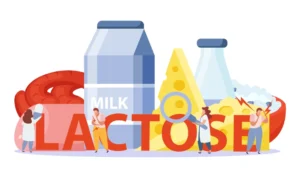
When you actually have digestive problems, but you are unable to resolve them, and weeks have gone, the discomfort and diarrhoea are still present. It is possible that you might have small intestinal bacterial overgrowth (SIBO).
When the population of bacteria in the small intestine increases abnormally, SIBO typically begins. Your small intestine has been colonised by these bacteria for an excessively long time. The healthy bacteria that aid in digestion may be harmed if the dangerous bacteria multiply excessively, which could cause an imbalance.
The good news is that it is treatable and diagnosable. First, we must identify the true underlying problem that is causing this condition.
Things that can causes SIBO
- Age – older adults are more vulnerable because they produce less stomach acid
- Anatomy – the small intestine of some individuals may be shaped differently
- Proton-pump inhibitors and excessive antibiotic use
- Diabetes
- Hypothyroidism
- Chronic stress
- Chronic alcohol use
- Poor sleep and diet
- Histamine intolerance
- Neurological symptoms
- Suppressed immune system
- Chronic infections from Lyme disease or other tick borne infections
- Excess estrogens
- Abdominal adhesions
- Surgeries and scar tissue including C-sections
- Endometriosis
- Metabolic disorder
- Irritable bowel syndrome
- Celiac disease
- The pH changes in your small bowel
- The immune system is not working properly
- The activity in the muscle of the small intestine malfunctions, it means that food and bacteria are not removed from the organ
What foods should be avoided with SIBO?
Patients with SIBO believe they need to figure out which foods trigger their symptoms and to develop a dietary approach that works for them. They use guidelines for what to eat and what to avoid as a starting point. Reintroductions can be tried once the symptoms have subsided. This is done by reducing the fermentable carbohydrates in the diet.
Focus on the main categories when eliminating FODMAPs in your SIBO diet that includes.
- Fructose – also known as “fruit sugar” or a simple sugars commonly found in fruits and some vegetables, honey, and agave.
- Lactose – a type of sugar found in dairy products.
- Fructans – a type of sugar compound found in gluten products, fruits, some vegetables, and prebiotics.
- Galactans – it is a compound found in some legumes.
- Polyols – a sugar alcohol that is often used as a sweetener.
You may also consider eliminating food from your diet that includes higher amounts of FODMAPs.
- High-fructose corn syrup
- Agave nectar
- Honey
- Soda and soft drinks
- Garlic
- Onions
- Asparagus
- Butternut squash
- Cauliflower
- Artichokes
- Beans
- Apples
- Dried fruits
- Sausage
- Flavored yogurt
- Ice cream
- Sweetened cereals
- Barley
- Rye
- Grains
- Peas
What foods are safe to eat with SIBO?
What you can consume is the most crucial factor. Always remember that portion sizes matter because eating a lot of a low-FODMAP food might turn it into a high-FODMAP food. Always monitor how you feel in your body.
Here are some list of low FODMAP foods that you are freely to eat
- Meat, fish, seafood, poultry and eggs (without standard gravies, breading or marinades)
- Rice, corn meal, quinoa, oats
- Many types of vegetables, including zucchini, tomatoes, green beans, lettuce and cucumbers
- Most starchy vegetables, including yarns, potatoes, parsnip and taro root
- Many types of fruits, including grapes, strawberries, blueberries, cantaloupe and oranges
- Lactose-free dairy products
- We need to eat fresh food as this reduces many harmful ingredients found in processed foods
Tips for successfully SIBO Diet changes
Keep it simple start.
Develop a simple food list using a few basic dishes that are suitable for you. You will initially repeat meals a lot. You can experiment with new dishes and broaden your menu options after you are at ease with your daily dietary modifications and are aware of the foods that trigger your symptoms.
Be prepared.
A “happy mood” chemicals or neurotransmitters can change when the inflammation from the guts gets into the brain.
Be as strict as possible about the diet for 2-4 weeks.
It can help you get rid of the symptoms quickly and provide a solid starting point for reintroducing foods.
Don’t stay on any diet too long if it’s not working.
If after a few weeks there is no improvement, you may choose to try a different strategy—do not stay.
Reintroduce foods slowly and one at a time.
First, introduce the dish you missed the most. For at least two days following the reintroduction, you must pay close attention to your symptoms. If the first reintroduction goes well, you can try a second one a few days later. Before adding more food, wait until your symptoms are under control.
Identifying your trigger food and reducing symptoms are the main goals of any elimination diet. You should gradually increase the things you eat while reducing the ones that make you sick.
Visit the Inner Health Clinic – Transform Your Gut in Stockport, Manchester, if you are suffering with SIBO and need a health professional to assist you with this kind of problem. The clinic provides SIBO treatment. Call 07712 620909 or send an email to info@transformyourgut.co.uk for an appointment.

